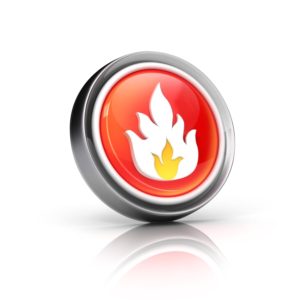
Carbon Monoxide From Fireplace – Carbon monoxide (CO) is a natural gas that results from burning gas, wood, kerosene, charcoal, or oil. It’s a dangerous gas because it’s odorless, tasteless, and invisible. This means that it can build up in your home without you knowing it.
Exposure to CO causes symptoms like nausea, vomiting, headache, and dizziness. If left untreated and the person doesn’t get out of the house, CO can become fatal very fast.
The most common household appliances that produce CO are your furnace, water heater, and fireplace. Extra care needs to be taken to prevent yourself from becoming a victim of CO poisoning. Click here for the Best-Selling Fire Safety Products.
Preventing Carbon Monoxide From Your Fireplace
Whether your fireplace is wood or gas, the dangers of CO are still the same. Any type of combustion will produce CO in varying amounts. The following are two basic ways to keep your fireplace safe.
Proper ventilation. This is a big one. Proper ventilation will let the CO safely leave your house and prevent build-up. Before lighting your fireplace, make sure the dampers are open to allow heat, smoke, and CO to flow up the chimney. A surprising ventilation problem is that the house is too airtight. While this is great for home efficiency and saving on energy bills, it can potentially prevent CO from going up the chimney.
Keep Your Chimney Clean. Anytime you have something burning, you’re going to have a buildup of soot. To prevent this, have your chimney inspected annually by a professional to look for excess soot and clean it out before it becomes a problem. This mostly applies to wood-burning fireplaces, but even gas chimneys should be inspected for proper functioning.
Signs Of Potential Carbon Monoxide Problems
Usually, there will be warning signs in your fireplace before CO becomes a health hazard. Here a few problems to watch out for:
A noticeable buildup of soot in fireplace and chimney.
A back draft where the air is coming down through the chimney.
A yellow pilot light instead of blue (for gas-powered appliances).
Install Carbon Monoxide Detectors In Your Home
One of the easiest and cheapest ways to protect yourself from CO poisoning is to install a CO detector in your home. But placement is important. They should be placed on every level of your house and outside sleeping areas. A CO detector should also be placed within 5-20 feet from any source of CO like fireplaces, furnaces, and water heaters. Make sure you check the batteries in your tester regularly and they should be replaced once per year.
Finally, never ignore a CO detector alarm. If a CO detector alarm in your house does go off, leave your house immediately, don’t assume it’s a false alarm. Once safely outside, call emergency services. Firefighters can safely enter your home using supplemental oxygen and have specialized CO detectors that help them pinpoint the problem. Only enter the home when the fire department says it’s safe to do so.
If someone is showing signs of CO poisoning, let emergency services know immediately so they can begin treating the person on the scene.
A Little Common Sense Goes A Long Way
Keeping your family safe isn’t difficult. It requires proper fireplace maintenance, good ventilation, and CO detectors placed throughout the home. Those three simple actions will greatly reduce the chances of having a CO emergency. Click here for the Best-Selling Fire Safety Products.